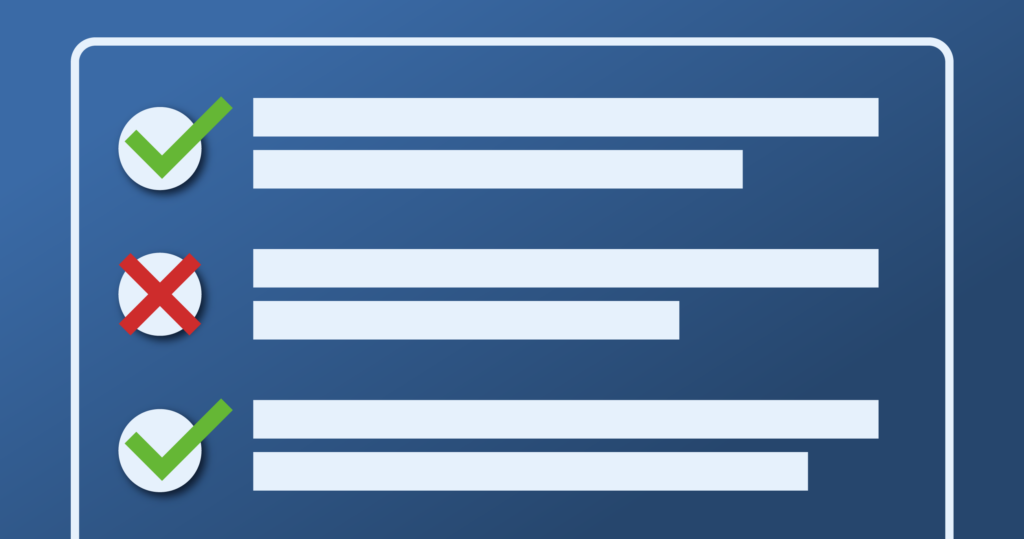Unlock Actionable Insights: 5 Tips for Designing Impactful Market Research Surveys
Author: Sean Hughes
The most effective and lucrative business decisions are data driven. Sometimes the information needed to make a business decision can come from internal polling or even conversations with team members but many require customer input. Market research survey data can be an invaluable tool when making these kinds of decisions. Whether you’re looking to increase sales, develop a pricing strategy, or prioritize the right features for a product release, customer insights can help you edge out the competition, improve customer satisfaction, and optimize your spending. However, designing an ineffective survey can lead to worthless or even inaccurate data. In this blog post, we will explore five tips to help you design surveys that yield reliable and actionable data.
Define Your Objectives
The first step to any market research project is to clearly define your research objective. This may seem like an obvious first step but without well-defined goals your survey may lack focus and produce vague or even irrelevant results. Take the time to identify specific research questions that are aligned with your business needs. For example, if you’re launching a new product, your objective could be to understand customer preferences, assess demand, and identify potential target markets.
A common mistake is defining too many research objectives or a single objective that is too broad. It can be tempting to try and ask your audience about as many things as you can in a single research project in order to maximize your spending but this will only lead to fewer actionable insights. If you have many questions for your audience or a question that is very broad, you should consider breaking it down into multiple surveys that can each be focused on one specific aspect of your goal. This will result in more meaningful insights and therefore, more effective business decisions.
Determine Your Target Audience
Understanding your target audience is essential for crafting a survey that yields meaningful insights. Start by defining your target audience based on demographics, interests, or behaviors. Sometimes this will come in the form of a very specific list of recruitment criteria and other times this will take the form of a few specific criteria and an even distribution of demographics in order to get a large and diverse sample. In either case, you should tailor your survey to address the specific needs and preferences of the audience you’re targeting.
Defining your target audience should also relate back to your research objective. If your goal is to add a new feature to an existing product in order to improve customer satisfaction, then you should use recruitment criteria that target your existing customer base. But, if your goal is to expand your customer base for an existing product, then it might be better to use recruitment criteria that excludes your existing customers but targets an untapped market so that you can discover what features would make them consider purchasing your product. In either case, defining your target audience is integral to getting useful data out of your market research survey.
Craft Clear and Concise Questions
The quality of your survey questions directly impacts the quality of the data you collect. Aim for clarity and simplicity in your question wording to ensure respondents understand what is being asked of them and avoid jargon or technical terms that may lead to confusion. A good thing to remember when drafting survey questions is that respondents are not as invested in your product or business as you are. If a question is too confusing or uses language they don’t understand, it’s very likely that they will either skip it or provide a quick answer that might not reflect their actual thoughts and opinions, just to keep progressing through the survey. Other things to avoid when drafting survey questions is biased language and questions that are too long. All of these examples will lead to inaccurate data and/or respondents dropping out of the survey which will increase the overall cost of the project.
Another way to approach this is by thinking about how to keep your respondents engaged. One way to do this is to try and use a mix of question types such as multiple-choice, rating scales, and open-ended. This method has the added benefit of collecting both quantitative and qualitative data. Another way to keep your audience from getting bored is by utilizing survey logic to skip questions or answer options that may not be applicable to certain participants based on their previous answers.
The final, and most important, aspect of crafting high quality survey questions is to relate them back to your research objective. Why do you want to ask that question? Does the question directly relate to a piece of data that you’re looking to collect and analyze? How do you plan to utilize the results of the question? Would the resulting data be more useful to you if it were in the form of a rating scale or open ended responses? Asking yourself questions like these can help you determine if you need to include a certain question, if the right question is being asked, and if the resulting data is in the most useful format for later analysis.
Consider Survey Length and Structure
Survey length plays a crucial role in response rates and data quality. Long and tedious surveys may lead to respondent fatigue or dropouts. Keep your survey concise by focusing on the most relevant questions. Going through your survey one question at a time and asking yourself the questions outlined above in relation to your overall objective can help you eliminate unnecessary questions or find areas where you’re not asking the right questions. Additionally, structure your survey in a logical manner to maintain a smooth flow. Group related questions together in sequence or on the same page and consider using progress indicators to give participants a sense of how far they’ve progressed.
Pre-test and Pilot the Survey
Before launching your survey to a wider audience, it’s crucial to pre-test and do a pilot launch. Pre-testing involves taking the survey yourself once it’s fully programmed and ready for launch. This allows you to identify any flaws, ambiguities, or confusion in the survey design and gives you a chance to test logic edge cases to make sure all skip, terminate, piping, and other forms of survey logic are functioning as intended. Pre-testing is invaluable but once you’ve done that, there’s no replacement for a pilot launch. This is when you release the survey to a small segment of your desired audience, usually around 10 – 30 people, before closing the survey and reviewing the resulting data. Based on the small dataset produced from a pilot launch, you can refine and improve your survey to further ensure it effectively captures the intended insights.
Designing an effective market research survey requires careful consideration of several key steps. By defining your objectives, understanding your target audience, crafting clear questions, considering survey length and structure, and pre-testing your survey, you can enhance the quality and reliability of the data you collect. Keep these steps in mind and apply them to your survey design process to gather valuable insights that drive informed decision-making. If you have further questions about survey design or would like to utilize our experienced team of specialists for your next market research project, contact us today.



